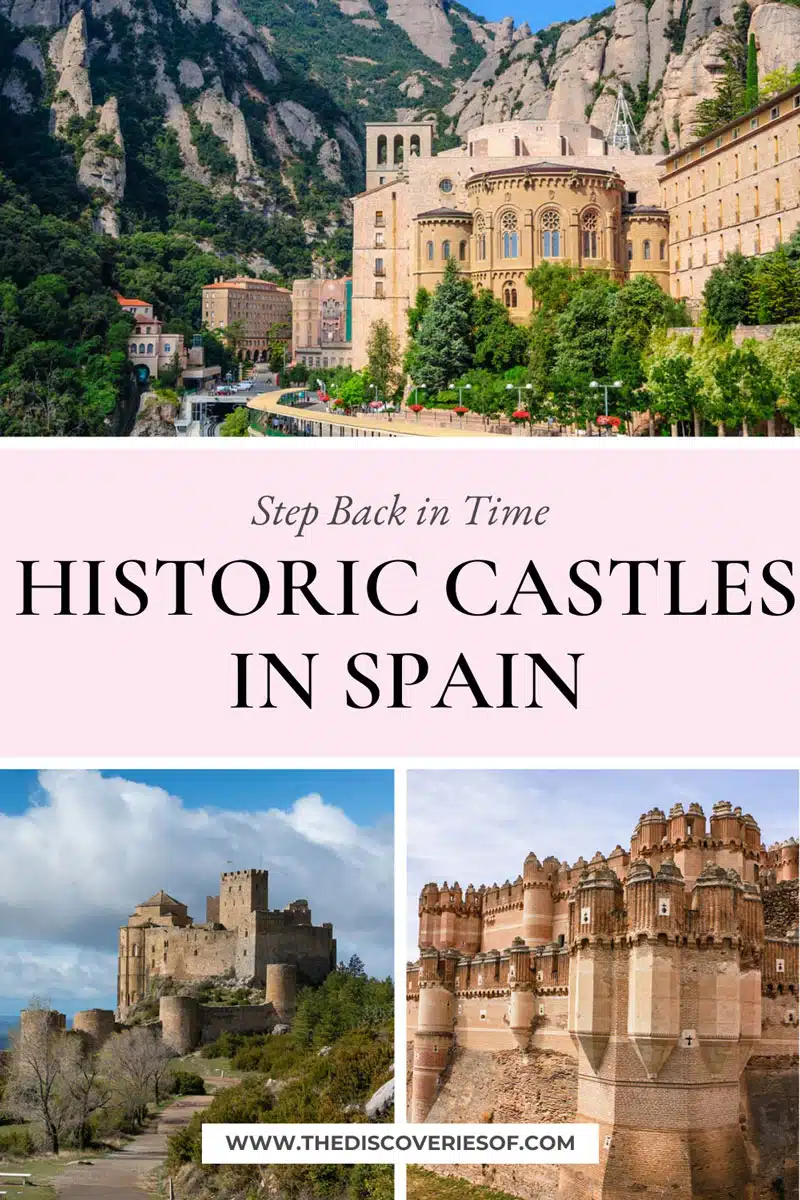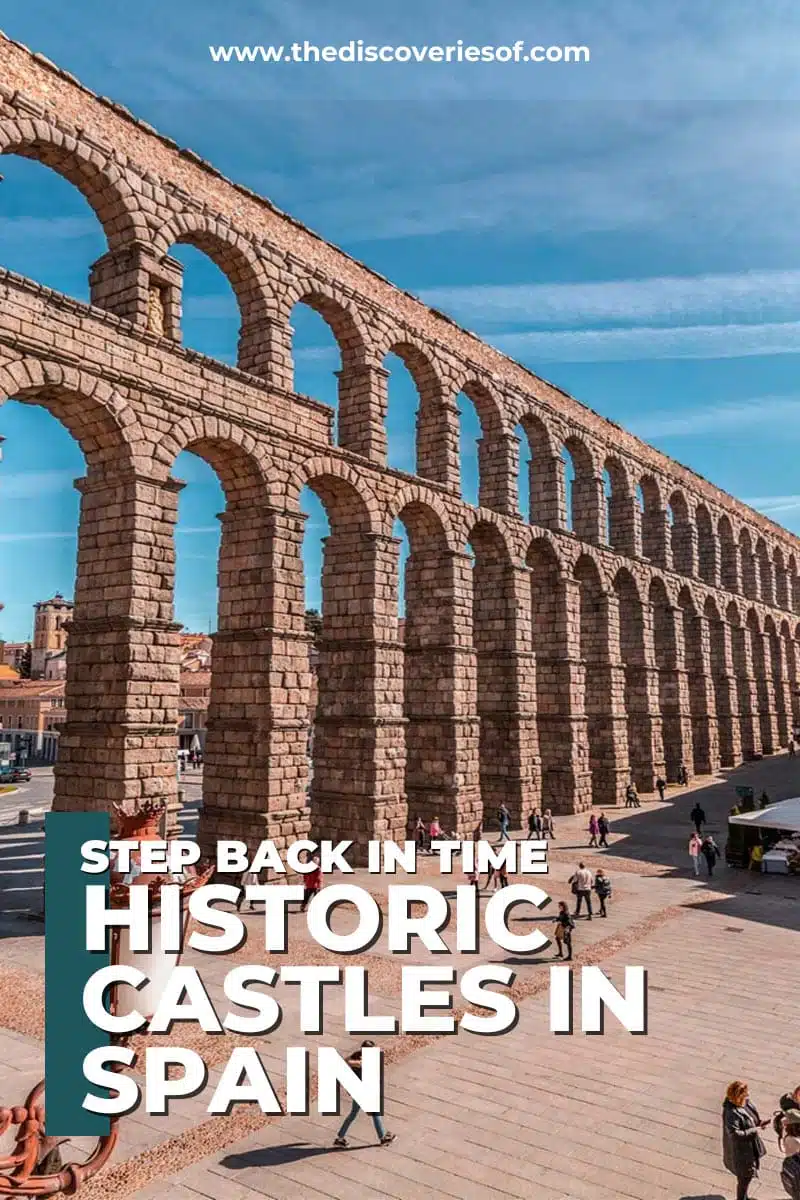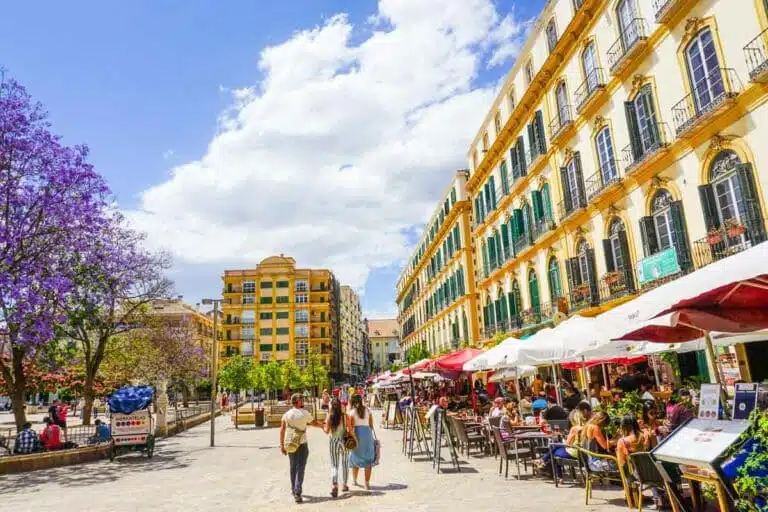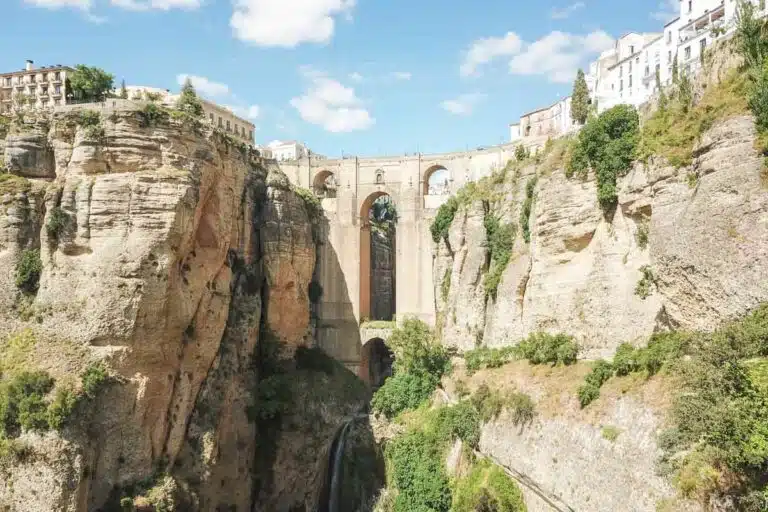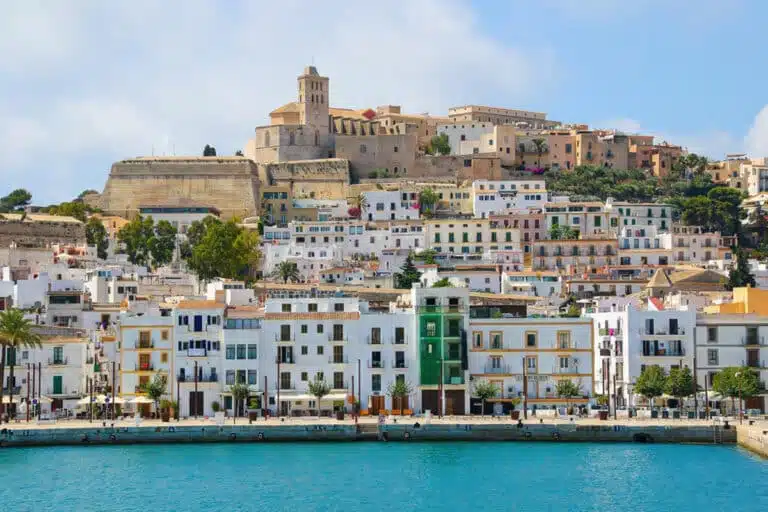Etching the pages of history into the landscape – Spain’s castles tell their own story. Delve into historical intrigue, architectural grandeur and hidden gems at these iconic fortresses.
Whether you’re hyping up its cool cities or lazing on its stunning beaches, there’s a lot to love about Spain.
That said, the real reason I love the country so much is its fascinating history and eclectic architecture. Where better to delve into this than in Spain’s castles?
The best part? They’re all so different. Of the estimated 2,500 castles in Spain, they range from Moorish to Baroque, a mishmash of architectural styles that shouldn’t, but inevitably works.
Join me and let’s explore the best castles in Spain (that you should totally add to your list for your next trip).
Top 5 Castles in Spain To Visit
The Alhambra
Granada
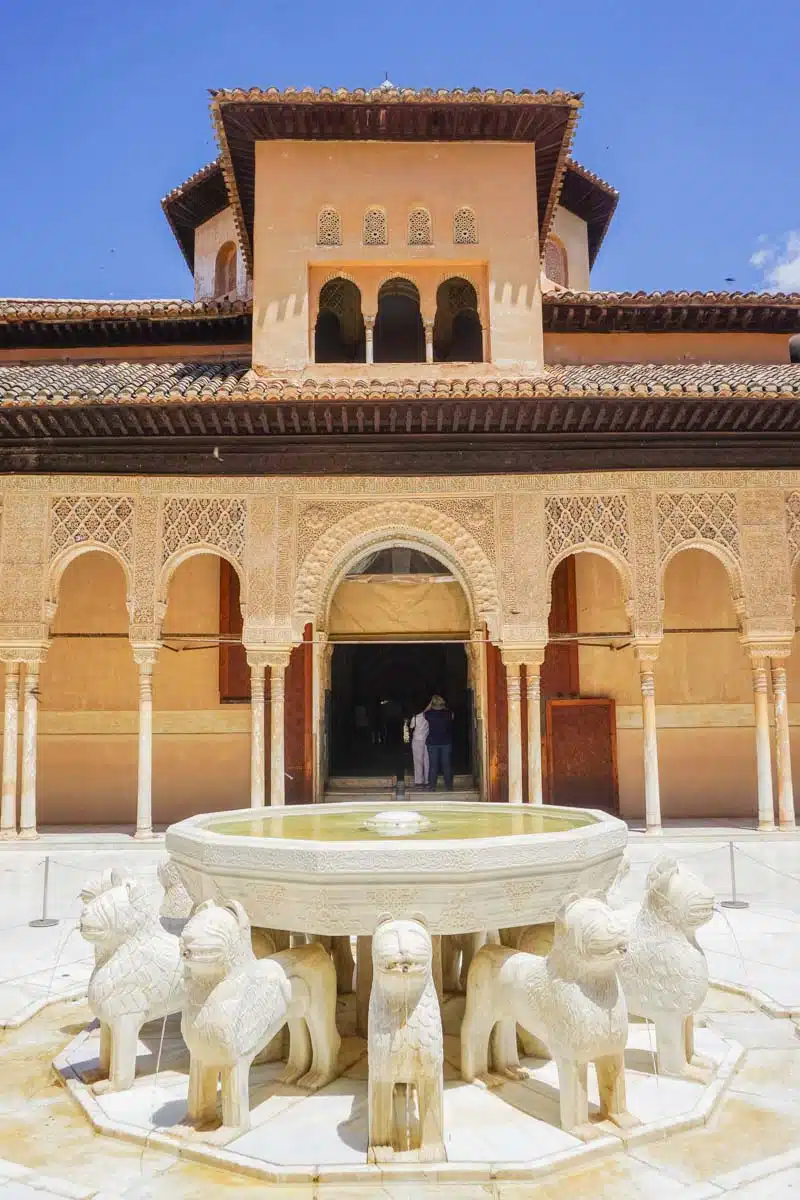
I’m going to make a not-so-bold statement: few Spanish castles can compare to the majesty and beauty of the Alhambra in Granada, a recognised UNESCO World Heritage Site.
Constructed as a reminder of the last Islamic Golden Age, it’s the only remnant of the Nasrid Dynasty, the last Islamic kingdom in Western Europe.
Making your way from the Jardines Bajos (Lower Gardens) through to the heart of the palace, the Palacios Nazaries (Nasrid Palaces), it’s a visual feast. Countless other feats of architecture solidify its place as a Spanish landmark, but the complex also houses the Museo de Alhambra and Museo de Bellas Artes (Fine Arts Museum), both of which are worth visiting.
That’s all before you get to the outdoor spaces, which are straight up stunning. Step into a series of elaborate gardens and courtyards – I dare you not to be wowed. The highlight is the Patio de los Leones, a stunning courtyard complete with a captivating fountain surrounded by 12 marble lions and 124 arcaded columns.
Top Tip: Book your entrance ticket well in advance – the Alhambra sells out quickly.
Alcazar of Seville
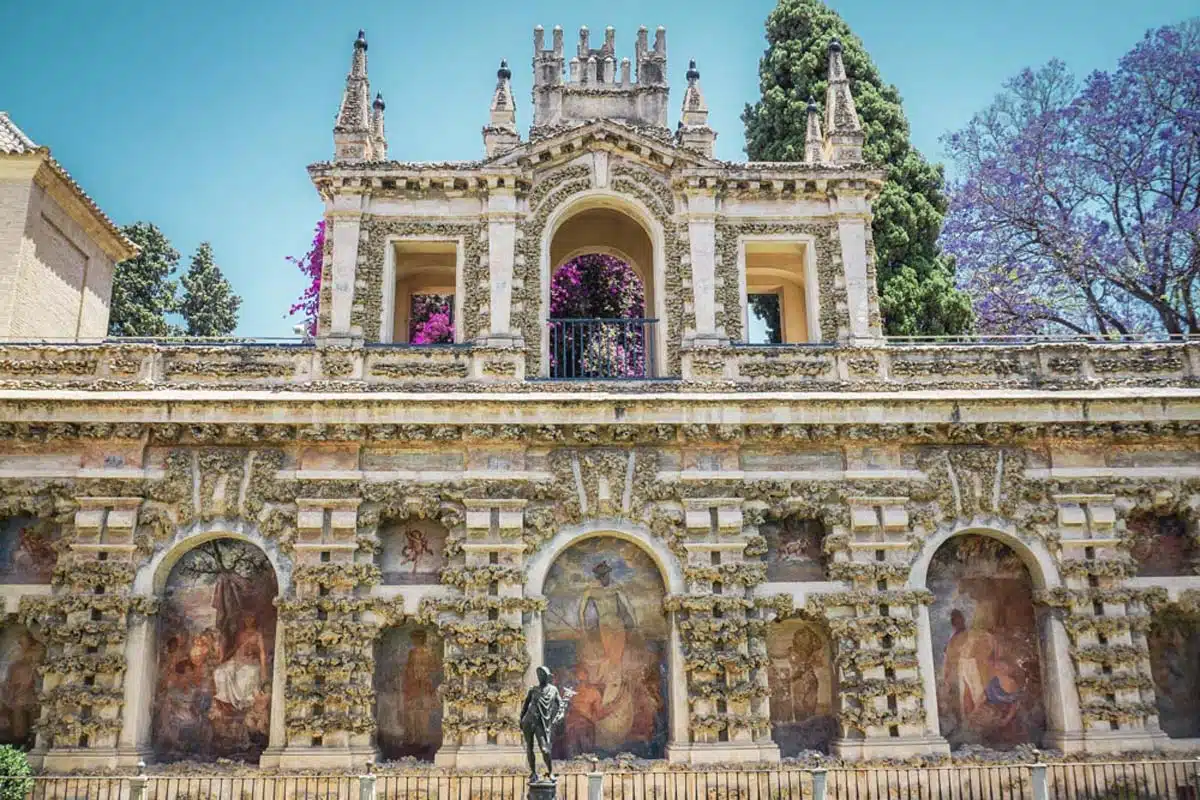
Famous as Spain’s castles are – few can compare with the Royal Alcazar of Seville. The oldest existing palace in Europe, the Alcazar dates back to the 11th century.
So, what should you expect? The entire complex is a maze of castles and gardens constructed over multiple historical periods. The result is a wonderful hodgepodge of architecture and design that’s pretty incredible to see IRL.
It’s not just a pretty face either: the Palace of King Peter I stands out not just for its style and build but also thanks to his political influences on the city and region. Unlike other castles in Spain like the Alhambra, the Alcazar wasn’t built or inhabited by Moorish rulers, but Peter I incorporated significant elements of Mudéjar style in his royal residence.
PS: If you think you recognise it, you probably do – it was used as the filming location for Dorne’s Water Gardens in Game of Thrones.
Top Tip: Book your entrance ticket in advance and make the most out of skipping the line!
Alcazaba, Malaga
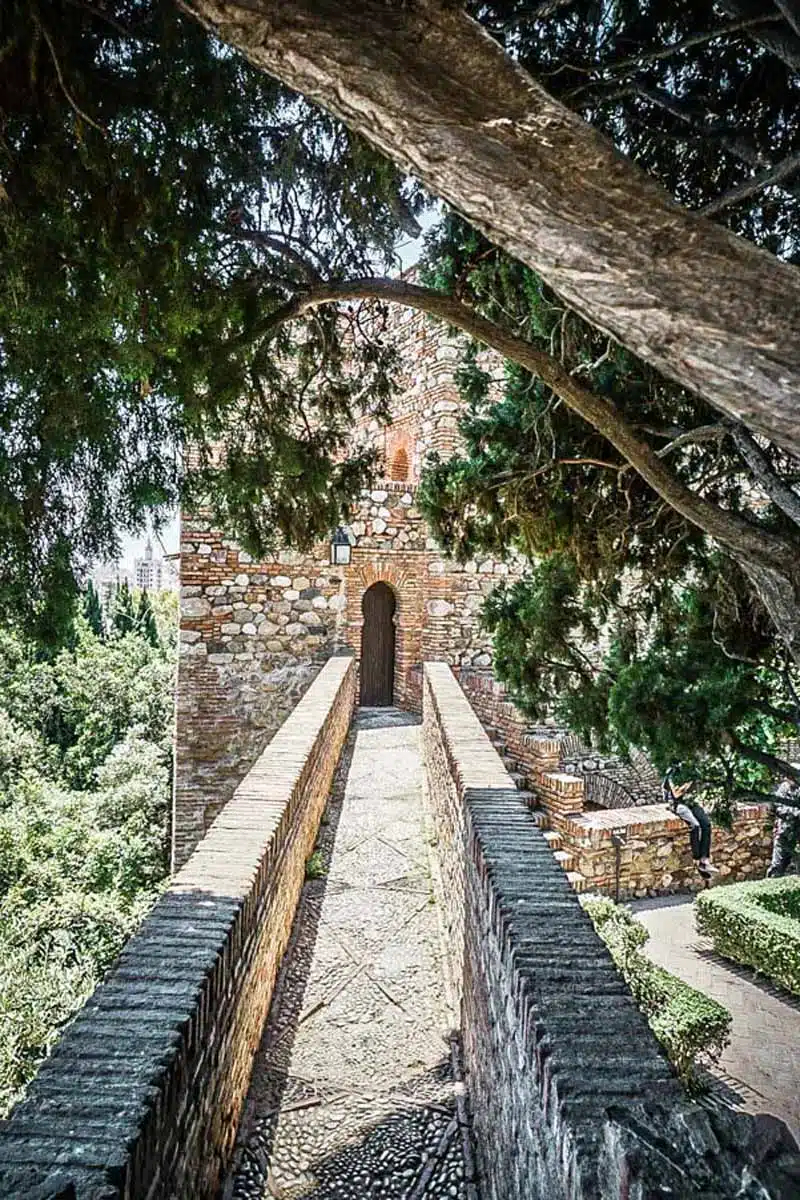
Perched overlooking both the Mediterranean Sea and the city of Malaga, the Alcazaba is not only a testimony to Moorish architecture, it’s one of the most stunning Moorish castles in Spain.
Dating back to the 11th century, the Hammudid dynasty dictated its construction on the slopes of the Gibralfaro Mountains.
There are more than a few reminders of its past status as a military fortress: keep an eye out for the square turrets and battlements punctuating the structure.
However, there are equal reminders of the recreational side of the Taifa-period citadel too – such as its proliferation of garden patios, orchards and royal chambers.
Although it’s not part of the Alcazaba itself, keep an eye out for the first-century Roman theatre that sits at its base. From here, you can roam (or, shall I say, Rome?) the leafy courtyards where, thanks to careful restoration, original Moorish ornamentations are still visible.
Abbey of Montserrat
Montserrat
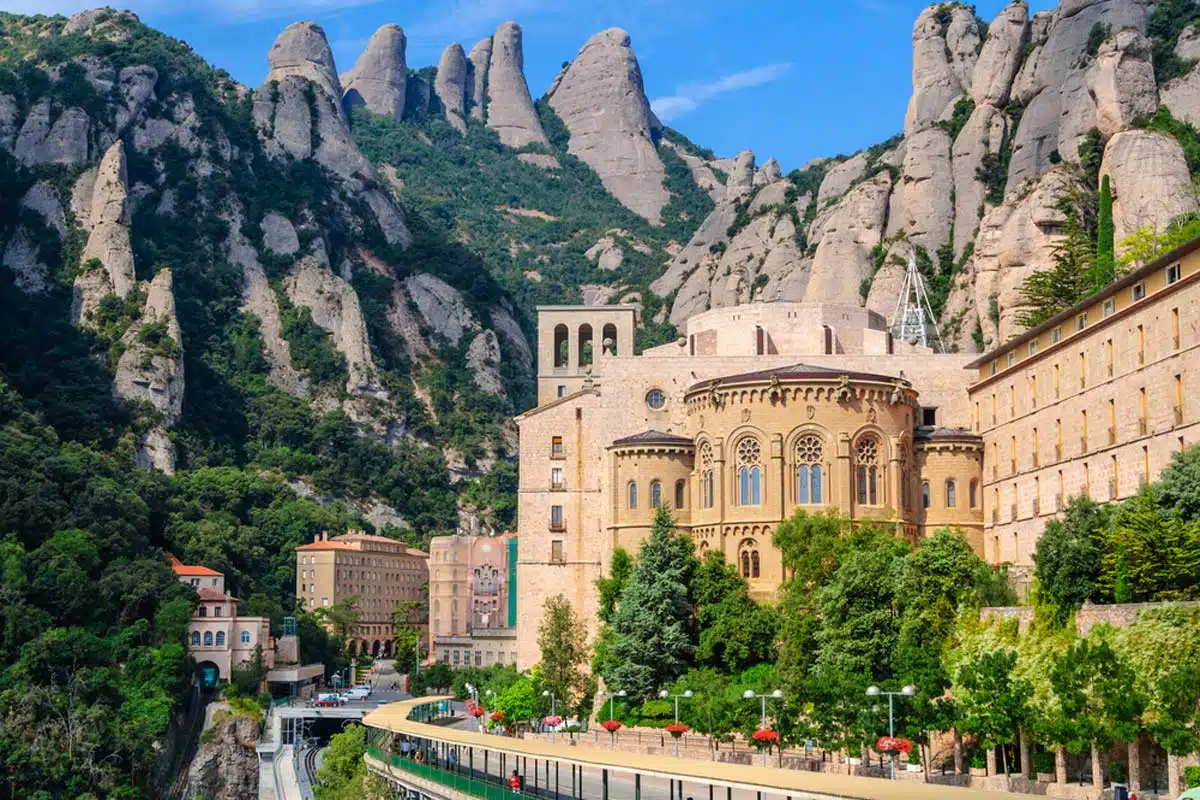
Calling the Abbey of Montserrat a Spanish Castle is a little bit of a stretch, but I think you’ll forgive me as it is magnificent. You see, this gorgeous Benedictine Monk retreat sits high up in the Catalan Mountains – which makes it a must-visit for any worthwhile Spain itinerary.
The monastery’s origin story is almost as grand as the monastery itself. Dating back to the year 880, legend has it that a small group of children witnessed a bright light descending from the sky onto the mountain into a cave where, after several trips, a local vicar found an image of the Virgin Mary.
Today the monastery stands close to the cave where the image was first discovered. Beautiful architecture aside, be sure to visit to soak up the amazing views of Catalonia.
San Juan de Guaztelagaxte
Bermeo
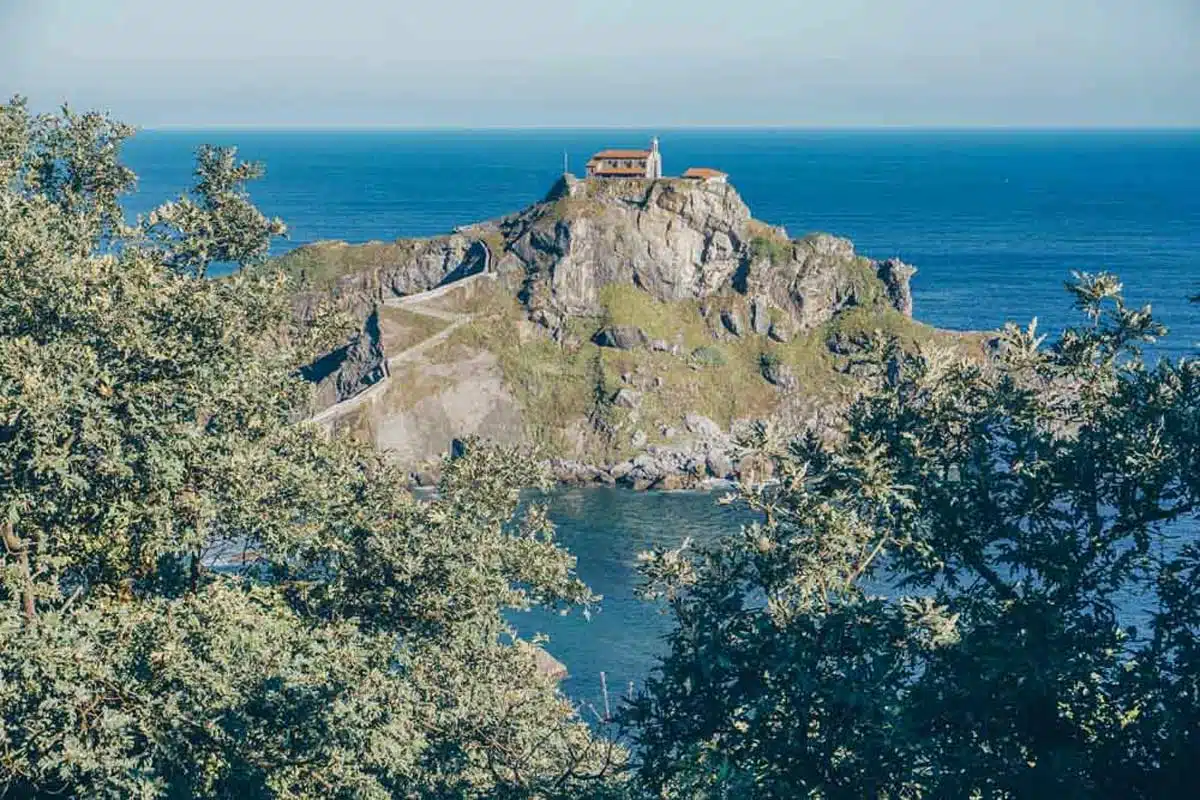
Did you really think I could write about Spanish castles without including one that IMHO is one of the most *iconic* castles? No chance.
Situated a short distance from Bilbao, San Juan de Gaztelugatxe is one of the country’s stranger structures. A fortress perched atop an island that’s connected to the mainland via an artificial stone bridge.
The narrow bridge comprises 241 steps (I counted them as I toiled up each one in the blazing heat during my visit), zigzagging across the bay and onto the islet, where the Chapel of San Juan de Gaztelugatxe awaits. Dedicated to John the Baptist, the church and the entire island also hold a revered spot in the country’s military history.
Used by the Seven Knights from Bascay to fight against Alfonso XI, it later played a small role in the Spanish Inquisition. The Catholic Church used the church in its witch-hunting efforts and the caves beneath it as holding cells for perceived witches.
Top Tip: San Juan de Gaztelugatxe doubled up as none other than Dragonstone in Game of Thrones (with a bit of help from CGI).
Beautiful Castles in Spain
Bellver Castle
Palma, Majorca
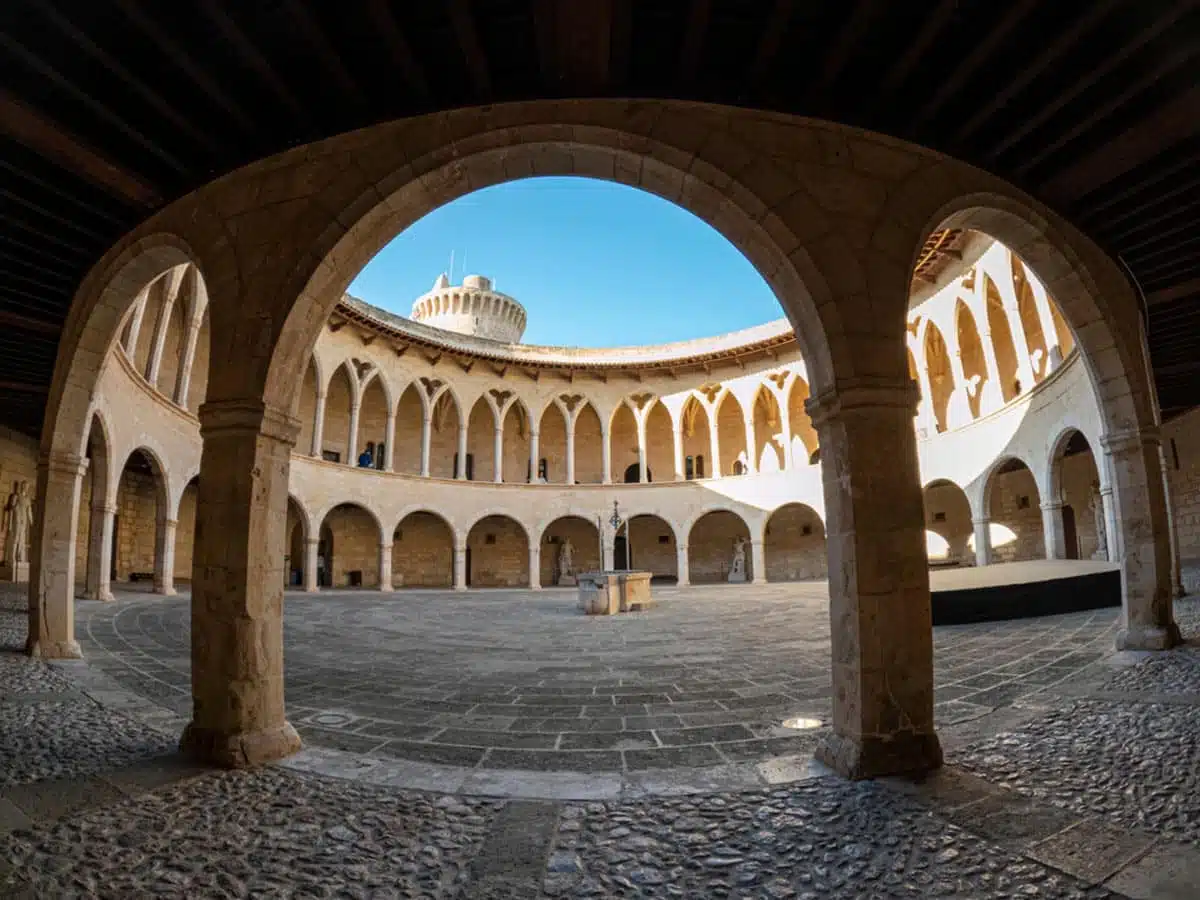
As far as fortresses in Spain go, there’s only a handful that demonstrates the political and military power of the country. One of these is Bellver Castle in the heart of Palma in Majorca.
Today the castle is a synonymous part of the city, not only because of its rich history but also its very unique design. In contrast to other fortresses, a majority of Bellver Castle’s structure is circular, similar to The Colosseum in Rome.
Inside you’ll find an expansive courtyard, which these days acts as a concert venue and centre for cultural events. To get an intimate feel of one of the few circular castles in Europe, guided tours of Bellver take you through many of the interior rooms.
After touring the interior, you can ascend the steps of Bellver onto the roof, where a glorious panoramic view of the city awaits.
Coca Castle
Segovia
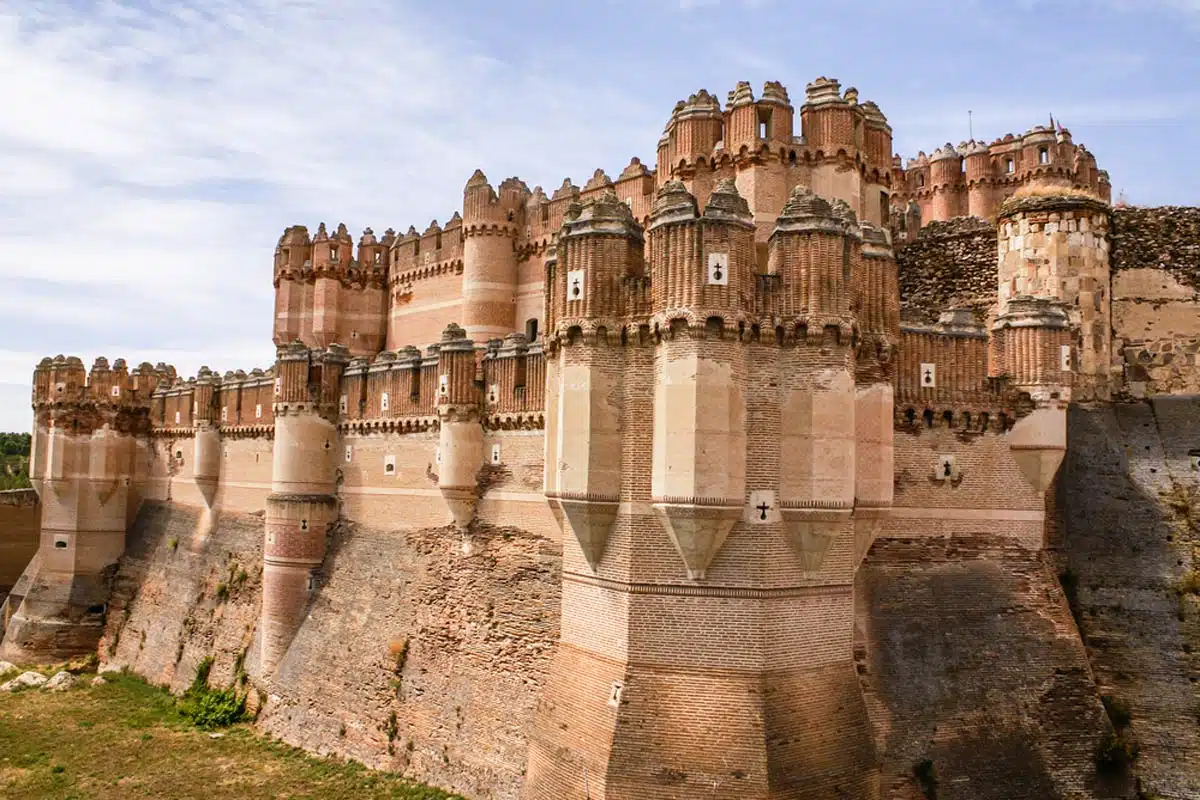
A standout amongst the many mediaeval castles in Spain, Coca Castle sits in the province of Segovia. Its origins date back to the 15th century, and with its distinct blend of Moorish and Gothic influences, it’s quite a sight to behold.
As the seat of the Crown of Castille, Coca Castle sits firmly within the aristocratic history of Spain. And, even though you’ll see numerous battlements in its structure, these are only decorative. But it is a stunning visual treat, with a tan brick exterior and multiple towers rising from the ground surrounded by a dried-up moat.
Heading inside, you can explore countless halls and courtyards once inhabited by the Spanish noble family, the House of Alba de Tormes. After the family handed over their stewardship of Coca Castle to the Spanish Ministry of Agriculture in 1954, the government declared it a National Monument.
Loarre Castle
Huesca Province
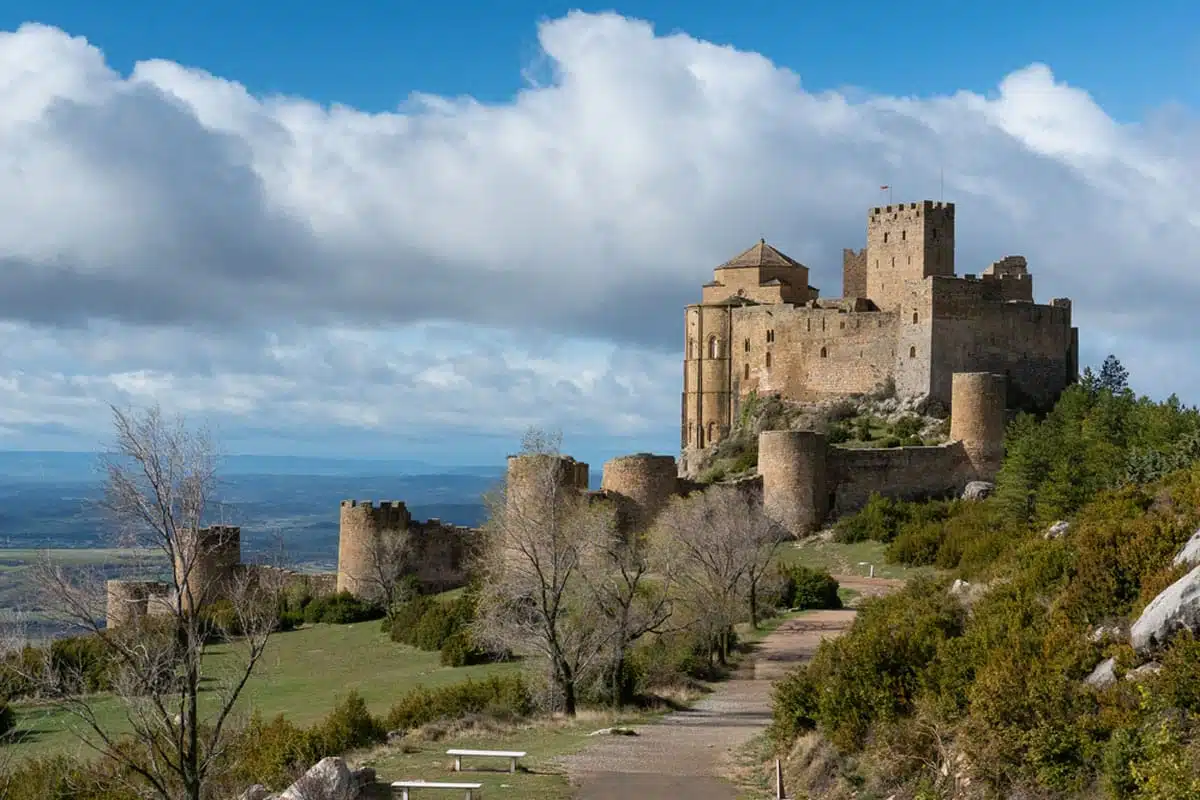
Looming over the landscapes of Huesca in the Aragon autonomous region of Spain, Loarre Castle is a captivating Romanesque castle sitting on a rocky outcrop. Constructed in the 11th century, its position on the frontier between Christian and Muslim lands gave it high importance.
Loarre Castle served a dual purpose as both a military fortification and a royal residence, and thanks to its limestone bedrock foundation, it’s one of the best-preserved castles in the country.
From afar, you’ll immediately notice the many cylindrical towers leading up to the castle proper — a characteristic trademark of Loarre.
After reaching the main castle grounds, one of the best things to do is to bask in the splendour of the Pyrenees mountain range. And after you’ve had your fill of the views, head inside, where you can delve into the castle’s epic role in the mediaeval Kingdom of Aragon.
Royal Palace of Madrid
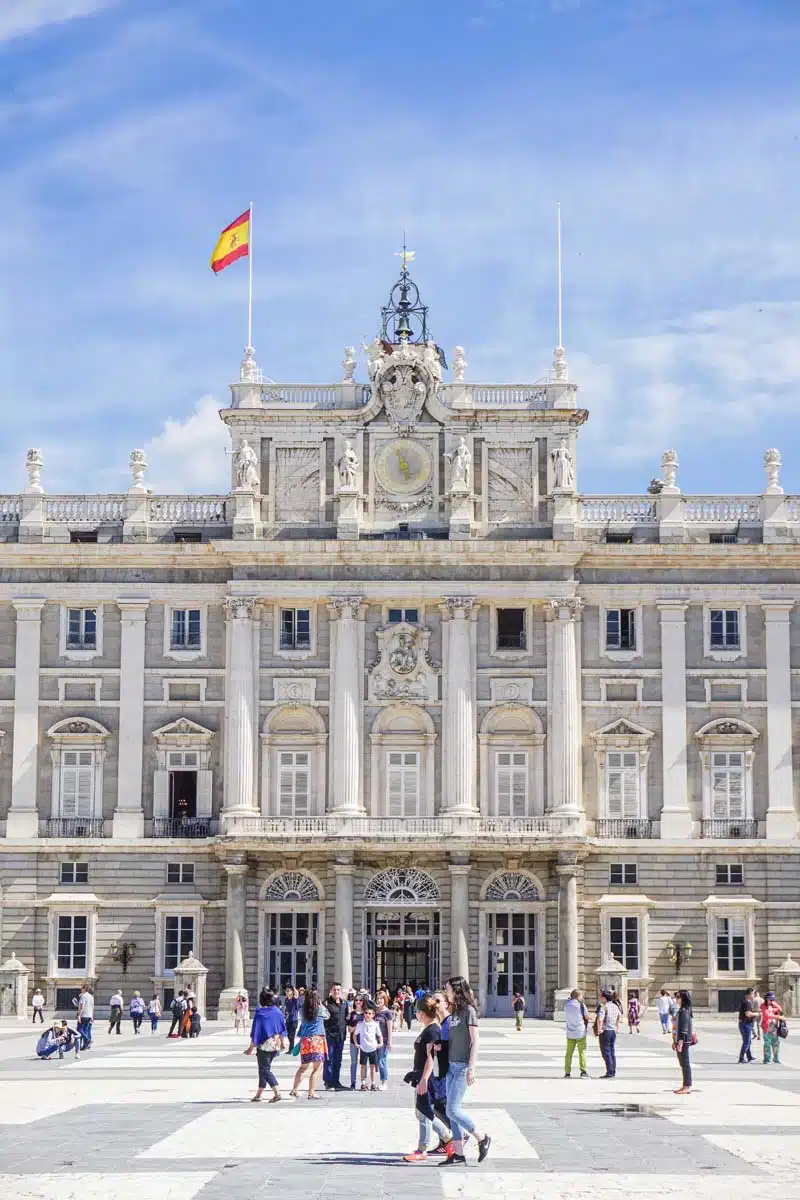
Just before you begin to lose hope that the capital city of Spain wouldn’t feature on this list, I present to you the Royal Palace of Madrid.
Aside from simply being a castle in Madrid, Spain, it is officially the largest palace in Europe still in use by royalty, as it’s the residence of the Spanish royal family.
Thankfully, you don’t necessarily need to delve deep into the past to explore the rich history of Spain, as a trip to the Royal Palace brings all the best to the forefront. Easily one of the ultimate examples of Baroque architecture, the palace spans over 3,400 rooms.
Sure, there are many amazing things to do in Spain, but no trip would be complete without stepping foot inside the palace. If you want some of its highlights, head straight for the Throne Room, Royal Chapel and the Royal Armory.
Top Tip: Book your entrance online and skip the queues.
Alcázar of Segovia
Segovia
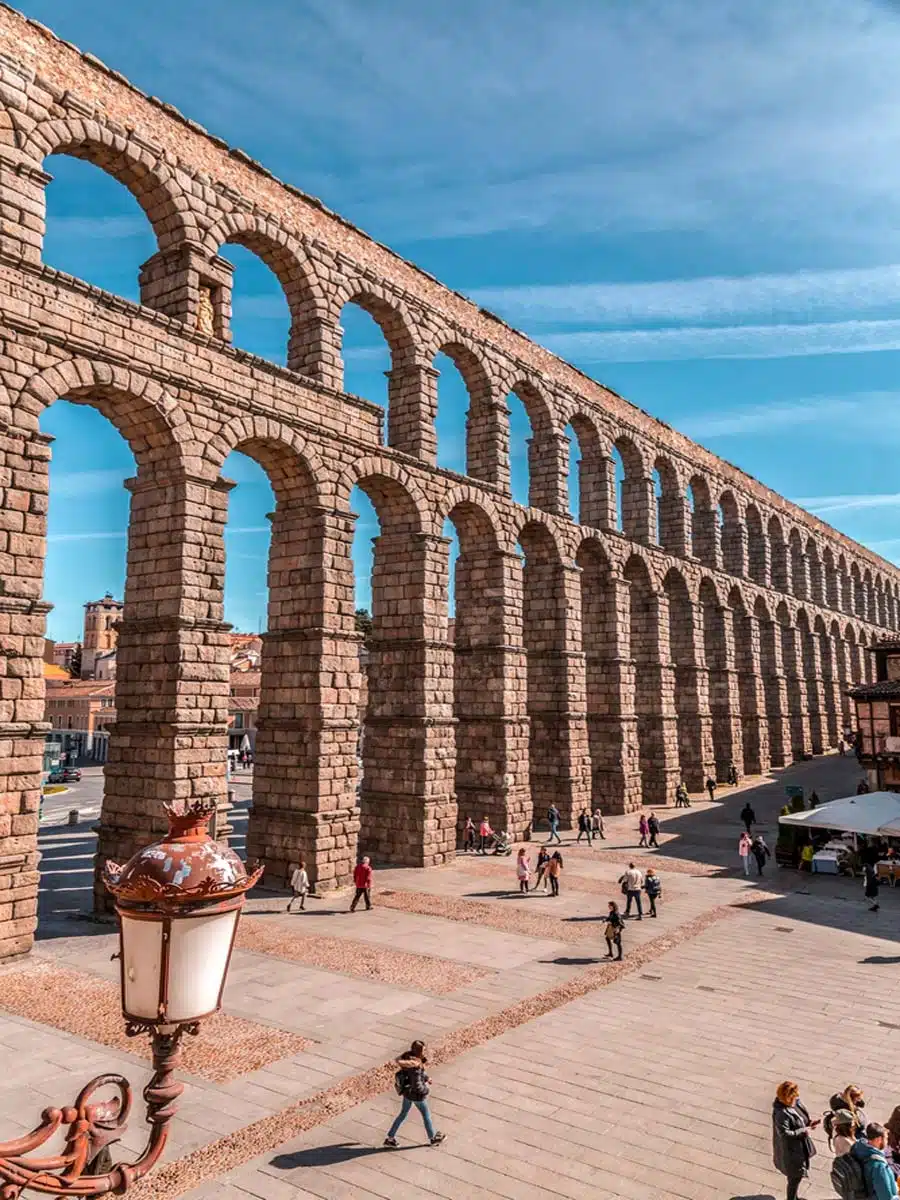
The Segovia region of Spain boasts quite a few eye-catching castles, but none come close to the Alcazar of Segovia. Overlooking the countryside, its vibrant history and whimsical elements make it the most memorable castle in Segovia, Spain.
Dating back to the 12th century, the Alcazar showcases a unique boat shape, and its blend of Herrerian style architecture and Spanish Gothic design elements give it a visual edge over its counterparts. During its history, it has served dozens of monarchs and acted as a prison and military academy.
The Alcazar of Segovia also seemingly acted as the inspiration for the Disney films logo, which you’ll instantly recognise from the outside. Of course, the many balconies offer incredible views of the region, giving it an even more magical feel.
Legend also has it that Queen Isabel and King Ferdinand met for the first time here.
Castle of the Christian Monarchs
Córdoba
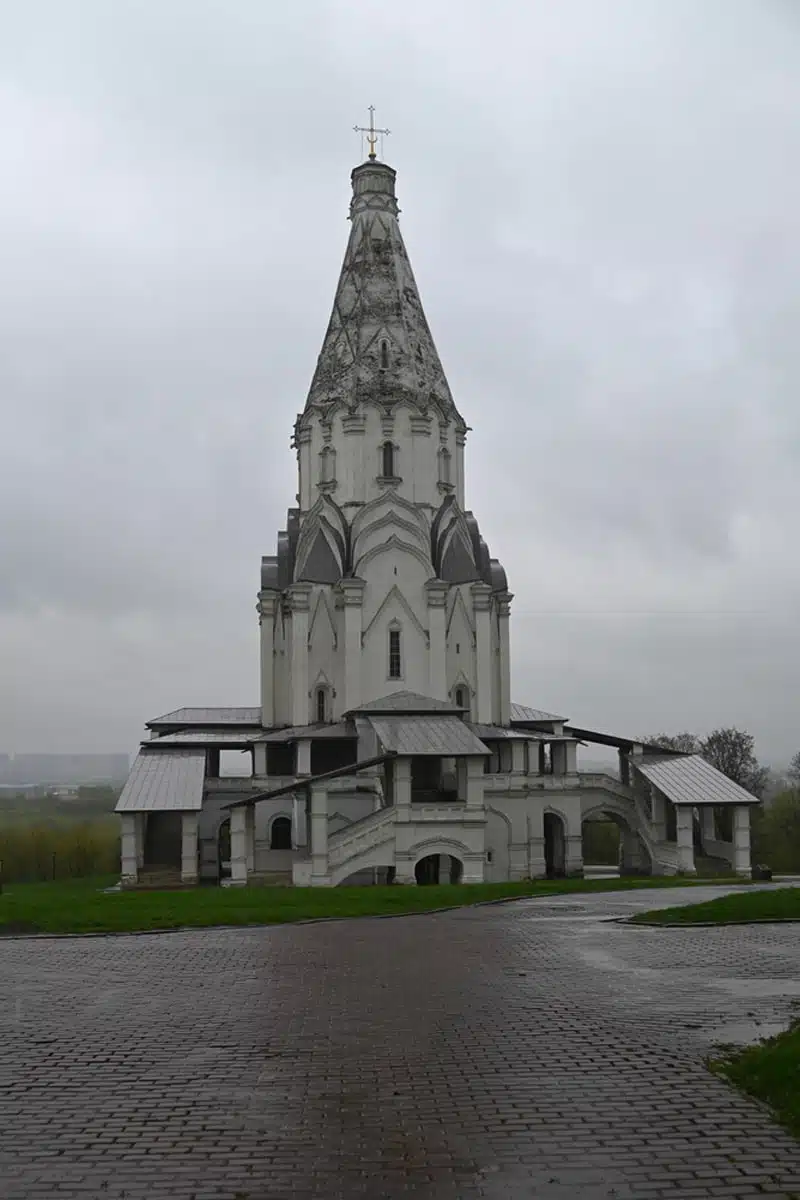
The Castle of the Christian Monarchs is located in the historic centre of Córdoba, next to the Guadalquivir River, a few minutes from the Grand Mosque. It’s a remarkable look into the city’s history, most notably as the residence of Isabella I and Ferdinand II.
Beyond its grandiose design and build, inside the castle, you’ll find truly captivating ancient artefacts ranging from a Roman sarcophagus to thousands of Roman mosaics. And, as sensational as that already sounds, the main attraction here is the castle’s immaculate gardens.
These spacious outdoor areas are buzz-worthy, to say the least, with many featuring magnificent ponds, elaborate fountains, orange trees, topiary, and flowers. Together with the Historic Centre of Córdoba, the castle became a UNESCO World Heritage Site in 1994.
Palace of the Kings of Navarre of Olite
Olite
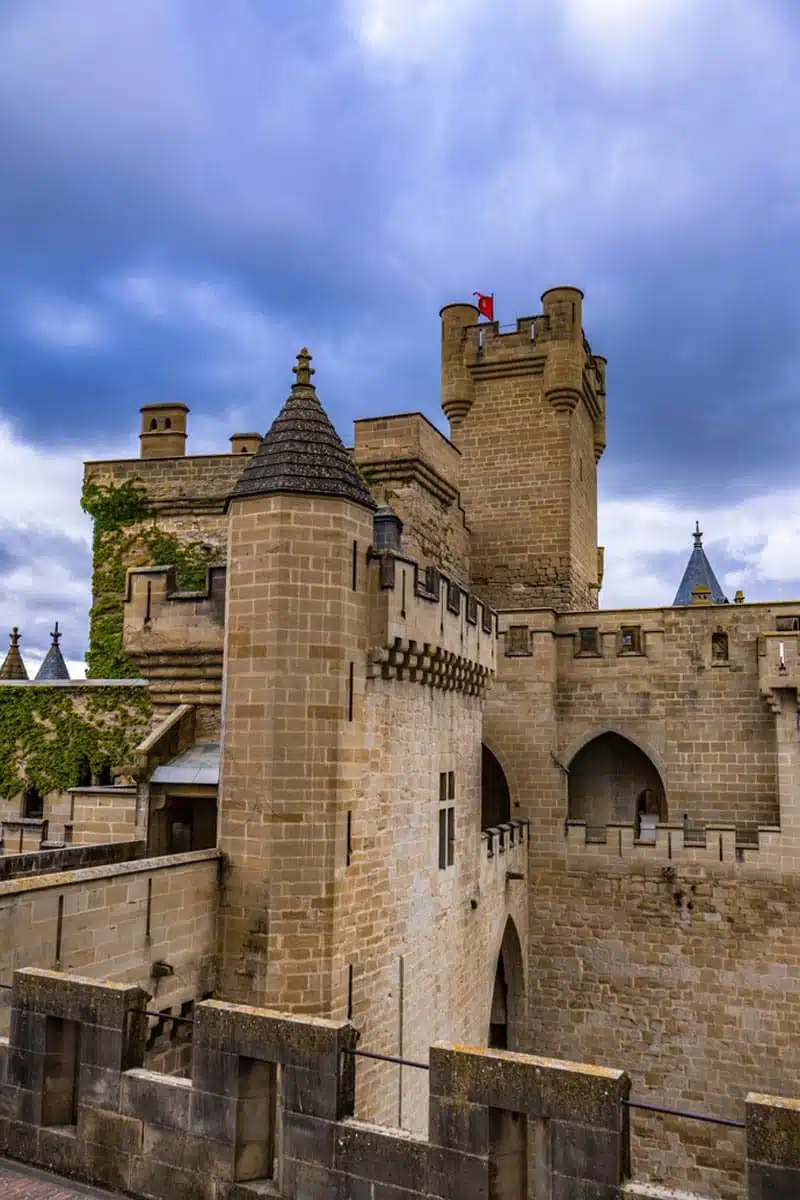
A stunning example of Gothic architecture, the original Royal Palace of Olite and the subsequent Palacio Nuevo date back to the 13th and 15th centuries. Now, if there was one thing the Kings of Navarre loved, it would be lavish living, evident in the many over-the-top features the castle showcases.
In its luxurious heyday, the palace contained marvels such as sprawling hanging gardens, enclosures for exotic animals, and an interior arena. This arena regularly saw jousting matches and bullfights held to honour the Kings of Navarre.
At first, you might think the castle appears strange with its brick-and-stone exterior and irregular patterns. Rest assured, this haphazard construction is entirely intentional.
Colomares Castle
Benalmádena
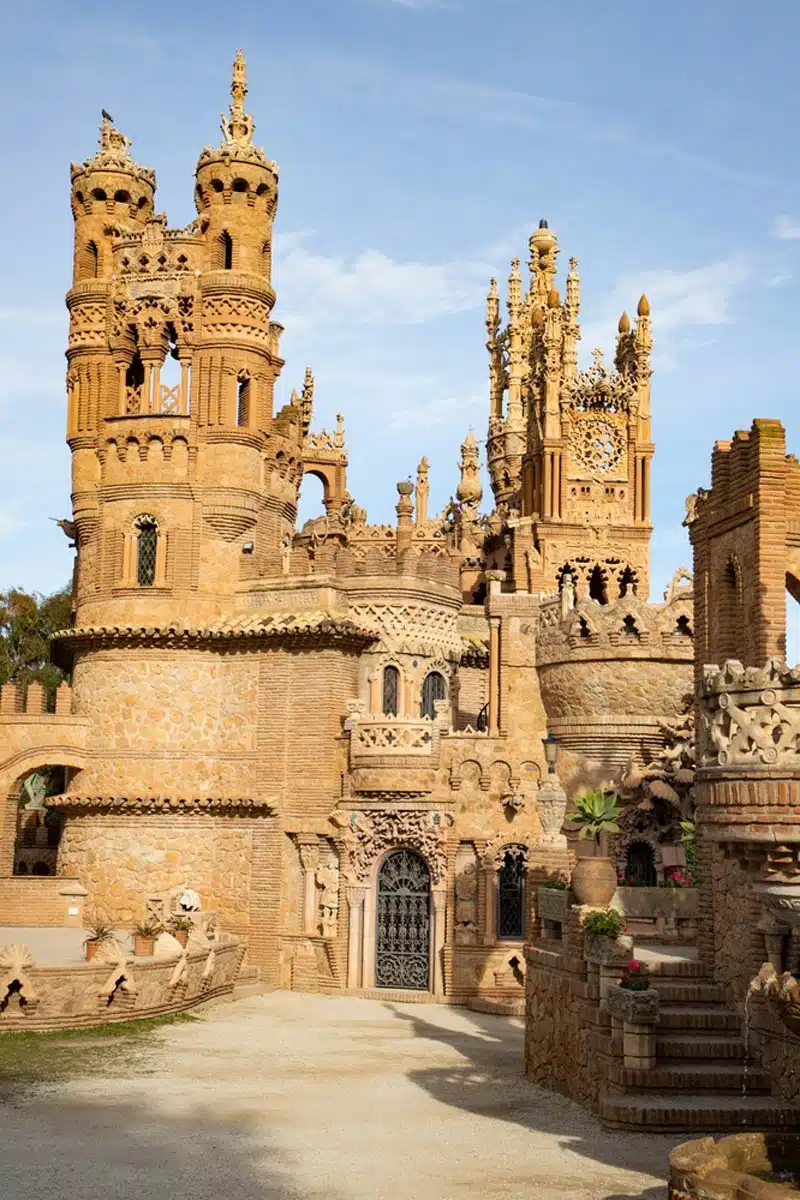
Although it appears that Colomares Castle dates back to a bygone era, this castle dedicated to Christopher Columbus originated in the late 20th century. It’s a fantastical monument to the explorer about 20 minutes from Benalmádena near Malaga.
It’s an undeniable treat to the eyes with a gorgeous exterior and interior, with many of his explorations depicted in stone in and around the castle. Not only that, but Colomares is also a crazy-wonderful collection of architectural styles. You’ll witness a blend of Roman, Byzantine, Gothic and Mudéjar visible throughout.
Warranting a stroll, the grounds feature unparalleled views of Costa del Sol and the Mediterranean. Heading inside, you should visit the miniature cathedral, recognised by The Guinness World Records as the smallest in the world.
Alcazar of Toledo
Toledo
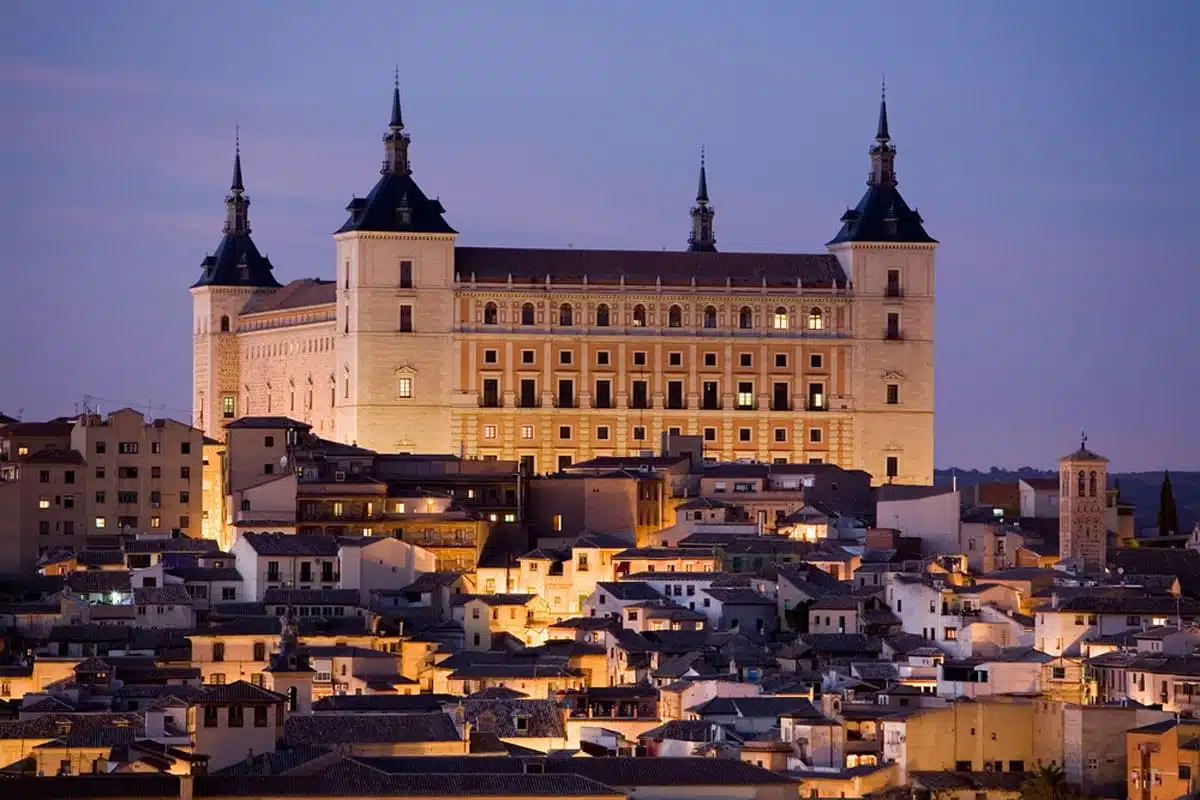
Built at the highest point in the city of Toledo, the Alcazar of Toledo began its life as a Roman mansion in the 3rd century. However, in 1535 under the rule of Alfonso VI and Alfonso X, the mansion underwent remodelling and became the castle you see today.
If you’re after a genuine war-stained fortress, in the Battle of the Alcazar during the Spanish Civil War, a single colonel and his battalion defended the castle against overpowering Spanish Republican troops. The original building suffered extensive damage during this siege, but today it is a glorious testimony to this battle.
Now the Alcazar of Toledo houses the Castilla-La Mancha Regional Library and National Army Museum. Beyond its impressive military past, the design, which features Renaissance, Plateresque, Medieval, and Purist influences, is quite a wondrous sight.
Practical Tips for Visiting Spain’s Castles
- While there are many operated tours to Spain’s Castles through sites like Get Your Guide, some only allow booking through official websites. Be sure to check before planning a visit.
- Considering the many religious cultural influences in and around the castles of Spain, it’s always good to respect this and act accordingly. Cover your shoulders and knees as a minimum.
Spain Castles: Map
Planning a Trip to Spain? Read These Next…
Love This? Save and Share on Pinterest
